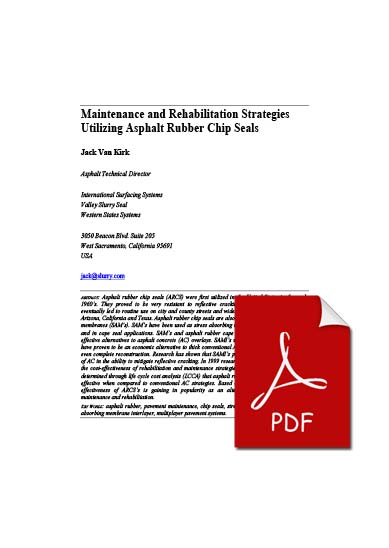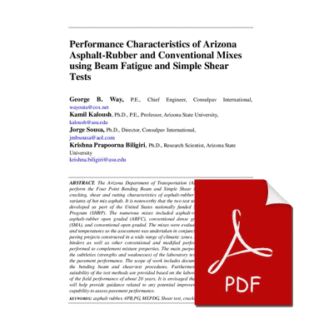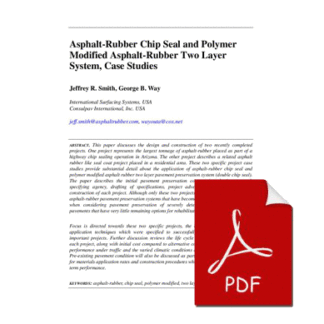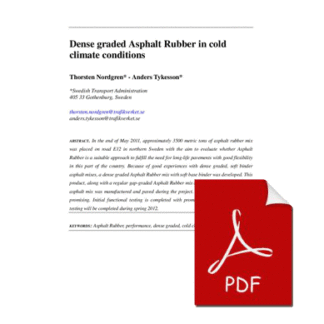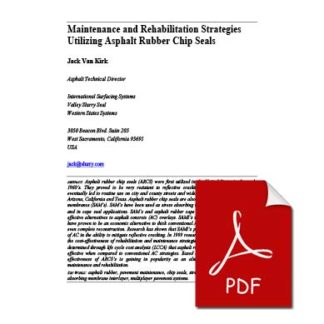Description
Asphalt rubber chip seals (ARCS) were first utilized in the United States in the early 1960’s. They proved to be very resistant to reflective cracking. Success on early projects eventually led to routine use on city and county streets and widespread applications throughout Arizona, California and Texas. Asphalt rubber chip seals are also referred to as stress absorbing membranes (SAM’s). SAM’s have been used as stress absorbing membrane interlayers (SAMI’s) and in cape seal applications. SAM’s and asphalt rubber cape seals have proven to be cost-effective alternatives to asphalt concrete (AC) overlays. SAMI’s used in multi-layer applications have proven to be an economic alternative to thick conventional AC rehabilitation strategies and even complete reconstruction. Research has shown that SAMI’s provide the equivalent of 52 mm of AC in the ability to mitigate reflective cracking. In 1999 research was conducted to determine the cost-effectiveness of rehabilitation and maintenance strategies using asphalt rubber. It was determined through life cycle cost analysis (LCCA) that asphalt rubber chip seals are more cost-effective when compared to conventional AC strategies. Based on field performance the cost-effectiveness of ARCS’s is gaining in popularity as an alternative strategy in pavement maintenance and rehabilitation.

